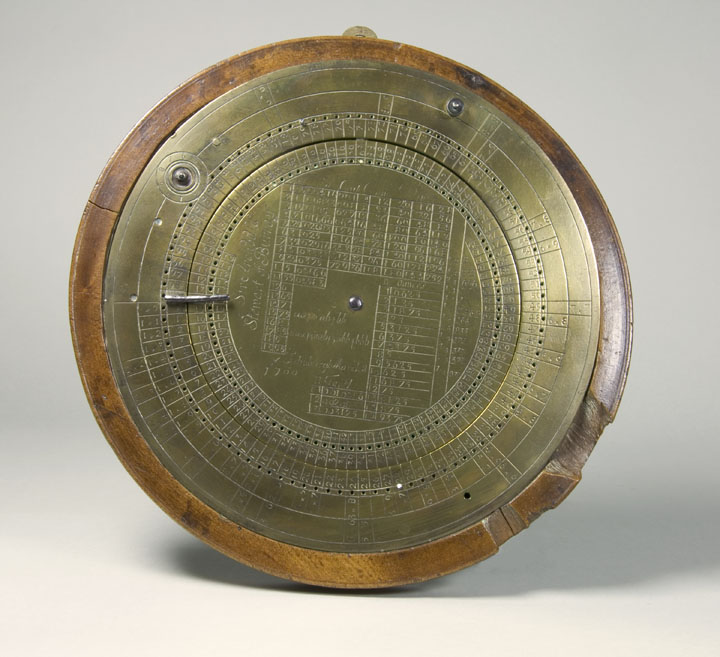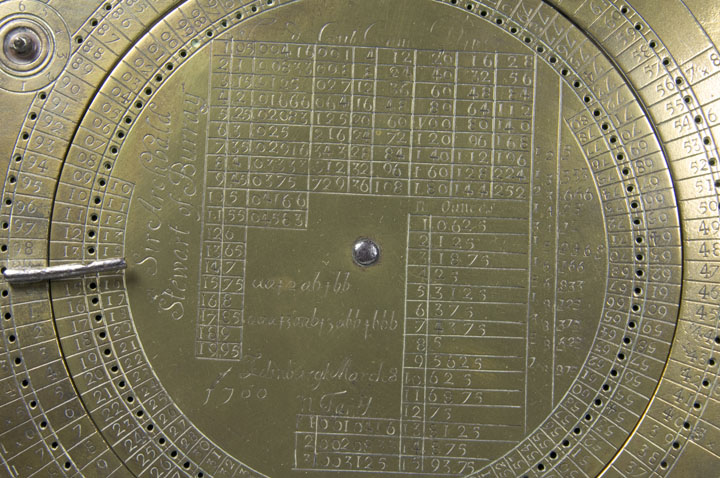A calculated history

Tucked away in one section of the large case that runs down the centre of the Merchant Lairds Gallery is an unassuming object which deserves more attention. It is a brass disc, around 6 inches (15.3 cm) in diameter, which is mounted to rotate like a dial. Around it is a brass ring that measures 1 1/2 inches (3.8 cm). There are numerous numbers engraved on this ring and a pointer, to use it for making complex calculations. Inside the central disc, there are sums of money, so its uses are varied. The whole mechanism is held within a battered hardwood circular base. Dr Hugh Marwick wrote a short paper about it in 1930, but he couldn’t explain how it was used either. I certainly have no idea, but I know that there are people out there who do. The team at Orkney Museum would be very interested to hear from you.
I can, however, tell you a bit about its history. It is a very rare example of an early calculator and was made in Edinburgh and dated March 8, 1700′. It bears the name of Sir Archibald Stewart, 2nd Baronet of Burray, for whom it was made. He was Member of Parliament for Orkney and Shetland during the last few years of the Scottish Government, from 1702 until his death in 1704. His estate was then inherited by his young son, Sir James Stewart.

Sir James was a man with a violent temper, who was implicated in the murder of Captain James Moodie RN on Broad Street, Kirkwall, in 1725. He was an ardent Jacobite supporter during the 1745 Rebellion of Prince Charles Edward Stuart. He was captured at his home at the Bu, Burray, in 1776. His house was burned to the ground in retaliation, and he was sent to London to stand trial for High Treason. He contracted ‘gaol fever’ (typhus) and died before he could stand trial, this saving his estate from being seized by the Crown.
His estate passed to a relation, Alexander Stewart, Lord Garlies, soon to become the 6th Earl of Galloway. He, in turn, sold it to Sir Laurence Dundas, and so it passed into the Earldom Estate. The calculator ended up in the estate office in Kirkwall. When the Earldom Office was disbanded in December 1929, the Chamberlain of the Earldom Estate, William MacLennan O.B.E., presented it to the Orkney Antiquarian Society’s museum in Kirkwall, and so it came down to us. I remember hearing, when I was young and new to the museum, that it was one of only three known to exist, but again, I would like to know if that is correct.
To make a donation to any of the museums please follow the link and support us. Thank you.
